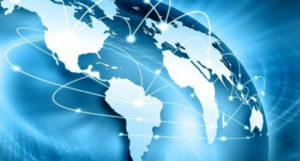Global Standardization of Enforcement
 Maybe I am a Luddite; maybe I just do not understand the new world and the impact of globalization. New ideas do not scare me, like others we know. New ideas present real opportunities for progress and innovation.
Maybe I am a Luddite; maybe I just do not understand the new world and the impact of globalization. New ideas do not scare me, like others we know. New ideas present real opportunities for progress and innovation.
I understand the impact that globalization has had on our economy, our society and our country. There are many positive benefits that flow from this incredible transformation in our economy over the last twenty years (at least).
When it comes to the practice of law and anti-corruption compliance and enforcement, I am having trouble embracing the standardization of enforcement. I have been reading articles and postings by practitioners and policy wonks arguing for the “standardization” of global enforcement of anti-corruption laws.
My response to these suggestions has been uniformly lukewarm (at best). Each country has its own interests, political needs, and limited resources, and should be able to design and implement whatever enforcement scheme they want – enforcement should be carried out in a way that fits the country’s needs and interests. The country adopts a law, and assigns law enforcement and prosecutors to enforce the law in whatever judicial (administrative or other) system the country may adopt.
Each country has the sovereign right to do what it wants in enforcing the law against companies and individuals. I do not see any need to cede this issue by convincing countries to adopt a uniform system of anti-corruption enforcement in an attempt to build consistent systems for enforcement.
Of course, countries may borrow ideas and procedures from other countries. There is nothing wrong with that and, in some circumstances that should be encouraged. Take for example, the use of deferred prosecution agreements. The UK has adopted a system similar to our system but with more judicial review and oversight. Canada is struggling with the idea of DPAs, and companies like SNC-Lavalin, are resisting settlements because of the unavailability of a DPA under the Canadian system.
From the company perspective, I understand how difficult compliance may be when there are varying standards around the world. The compliance standard becomes the lowest (or highest?) common denominator for companies to achieve. That can be a real difficult problem for compliance officers who want to implement effective ethics and compliance programs. However, many have argued that the “global” standard is quickly converging to a common set of program elements with differences only at the margins.
There is a real difference, however, when looking at global standards for enforcement. Compliance is one thing but enforcement of anti-corruption laws is quite another.
 Law enforcement and prosecutors have become adept in the coordination among countries in the investigation and prosecution of corruption criminals. The Justice Department has worked closely with foreign counterparts to coordinate fines and penalties against companies and offset penalties paid in one country against penalties paid by the same company in another country. No one disagrees with this close coordination.
Law enforcement and prosecutors have become adept in the coordination among countries in the investigation and prosecution of corruption criminals. The Justice Department has worked closely with foreign counterparts to coordinate fines and penalties against companies and offset penalties paid in one country against penalties paid by the same company in another country. No one disagrees with this close coordination.
The logical leap from coordination to standardization, however, is significant when it comes to each country’s sovereign authority over its people, its companies and its societal norms. It would be dangerous for countries to cede such authority to the “standardization” process and begin to implement uniform law enforcement schemes. That is too big a leap for me to take – especially in my old age!!
















I tend to disagree – respectfully. My perspective comes from outside the legal perspective. I have been in applying ISO standards, such ISO 9001 Quality Management System standard. ISO standards are applicable for a variety of enterprises independent of the widget product or service. I have written about a systems perspective to governance/compliance. The key to any system for compliance, whether it is complying to customer requirements or governance, is to have well designed and stable processes to detect non-compliance. When the odds of detecting non-compliance is sufficiently high, the risk of non-compliance is reduced. What standardization can do is help enterprises determine what key indicators and processes of compliance are. Standardization also is good from a transparency point of view. Individuals will be looking at the same indicators.